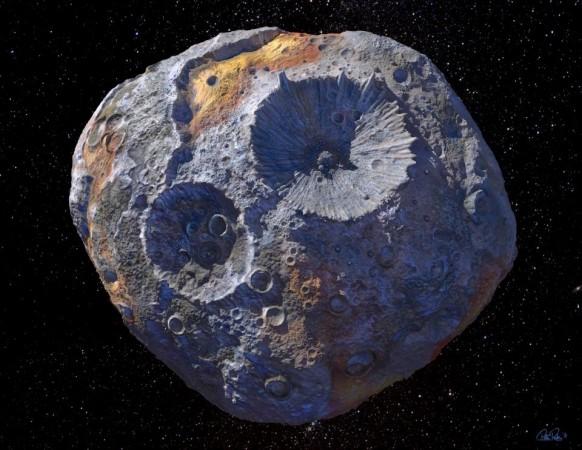
NASA has put in place mission plans to study the asteroid 16 Psyche. The mission, called Psyche, to study this asteroid is looking to a 2023 launch date.
Lying between Mars and Jupiter in the asteroid belt, 16 Psyche is said to be one of the 10 largest asteroids in the belt.
Also Read: Apocalypse avoided: Earth just escaped an asteroid hit! And you weren't even aware of it
Researchers believe the asteroid is metallic, but have also recently found evidence that suggests the presence of water on the rock. The discovery has left them mystified as to the water's origins, and NASA is hoping it can confirm the findings through the Psyche mission.
Asteroid 16 Psyche is an M-type asteroid, and irregular in shape. Its composition is not completely known, but it is assumed to be formed by pieces of metallic cores of separate asteroids that disintegrated due to impacts.
M-type asteroids are the third-most commonly found asteroid type and are composed of nickel-iron, in a pure form or mixed with small amounts of stone.
Discovered by Annibale de Gasparis, an Italian astronomer in 1852, 16 Psyche is over 200 kilometers in diameter (124 mile).
Research carried out by Driss Takir from the US Geological Survey (USGS) revealed that a 3-micron absorption feature was detected in the asteroid's spectra, which could be a possible outcome of water or hydroxyl present on the surface.
These recent discoveries by researchers point towards the fact that 16 Psyche could be a water-rich asteroid instead of being a metallic one. Scientists are curious to find the origins of the water on the asteroid and have already come up with numerous hypotheses.
"It is possible that water-rich minerals detected on Psyche might have been delivered to its surface by carbonaceous asteroids that impacted Psyche in the distant past," Takir said, according to Space Flight Insider.
"We also think that Psyche may not have an entirely exposed metallic core. Solar wind could be another mechanism that can produce hydroxyl by interacting with the surface of Psyche," Takir added.
The solar electric-powered Psyche orbiter mission, which is scheduled for launch in 2023 is likely to arrive at the asteroid by 2030, after which it will start mapping the asteroid over a span of 20 months.
The Psyche mission hope to collect data regarding the asteroid's geology, element composition, mass distribution, magnetic field, and shape.
These findings could reveal facts about the asteroid, such as what its core is made up of: Is it cosmic dust grains, or was it formed as an iron-rich body.







!['Lip lock, pressure, pyaar': Vidya Balan- Pratik Gandhi shine in non-judgmental infidelity romcom Do Aur Do Pyaar [ Review]](https://data1.ibtimes.co.in/en/full/797104/lip-lock-pressure-pyaar-vidya-balan-pratik-gandhi-shine-non-judgmental-infidelity-romcom.jpg?w=220&h=138)








